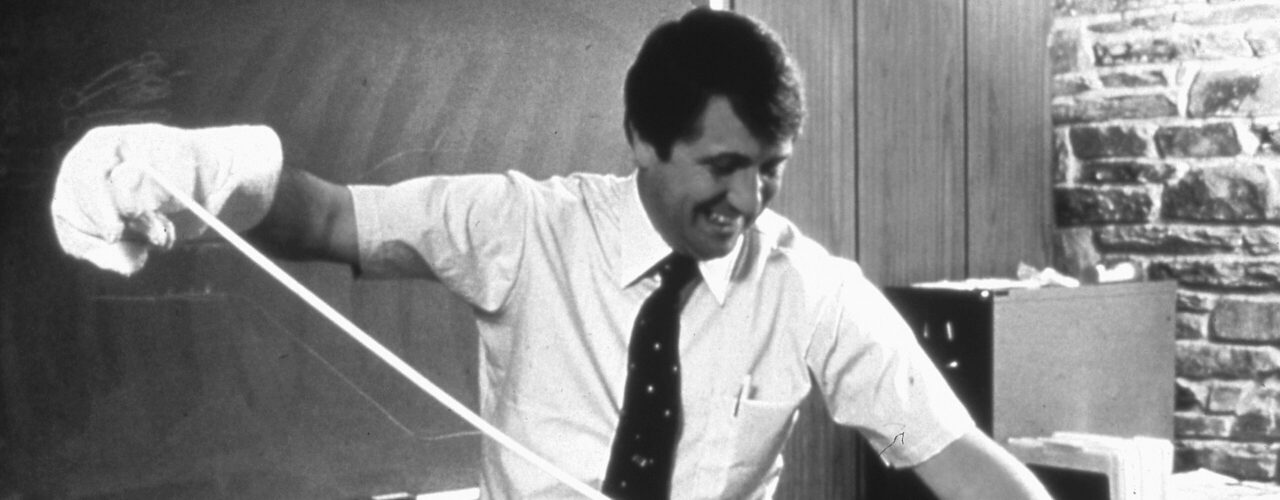
Science History Institute Mourns Loss of Bob Gore
The award-winning scientist and engineer, best known as the inventor of Gore-Tex, was a longtime member of the Institute’s Board of Overseers.
Engineer, scientist, inventor, and businessman Robert (Bob) W. Gore passed away on September 17, 2020, at the age of 83. He was chairman emeritus of the board of directors of W. L. Gore and Associates, a global materials science company headquartered in Newark, Delaware. He had a long association with the Science History Institute, serving on our Board of Advisors (formerly Board of Overseers) at the time of his death.
Gore was perhaps best known as the inventor of the technology that spawned the waterproof Gore-Tex fabric, an invention that paved the way for advancements in industries as varied as performance fabrics, medical devices, space exploration, and filtration. Our museum features several objects made from Gore-Tex on display in our Making Modernity permanent exhibition, including rain gear, plumbing materials, and an endoscope. Gore was also featured in our Scientists You Must Know film series.
Institute president and CEO David Cole was recently interviewed by BBC radio show Last Word about Gore’s life and legacy.
Gore was born in 1937 in Salt Lake City, Utah, the first of five children. His father, Wilbert (Bill) Gore, was a chemical engineer for DuPont and moved the family to the East Coast, ultimately transferring to DuPont’s Experimental Station in Delaware. In 1958 his father left DuPont to start W. L. Gore and Associates to explore other uses for polytetrafluoroethylene (PTFE), more commonly known as Teflon.
After completing a doctorate in chemical engineering at the University of Minnesota, Gore joined his parents’ company as an associate in 1963. His big breakthrough came in October 1969. As he was researching a new process for stretching extruded PTFE into pipe-thread tape, he discovered that the polymer could be “expanded.” A series of unsuccessful experiments revealed that a sudden, accelerated yank caused the material to stretch 1000%, which resulted in the transformation of solid PTFE into a microporous structure that was about 70% air. Soon W. L. Gore and Associates was using this expanded PTFE (ePTFE) in medical implants, fabric, industrial filters, sealants, and rainwear.
In addition to his PhD, Gore also earned an MS in chemical engineering from the University of Minnesota and a BS in chemical engineering from the University of Delaware. He had nine patents for his work with fluoropolymers and was elected to the National Academy of Engineering in 1995 for his technical achievements. He received the 2005 Society for Chemical Industry’s Perkin Medal, the highest award in the United States designated for an industrial chemist, and the 2003 Winthrop-Sears Medal from the Chemists’ Club and the Science History Institute, known then as the Chemical Heritage Foundation. He was also inducted into the American National Inventors Hall of Fame in 2006.
Robert Gore is survived by his wife, Jane, and a large family of children, grandchildren, and great-grandchildren, as well as four siblings and extended family.
Featured image: Bob Gore demonstrating the expansion of ePTFE, ca. 1982. Courtesy of W. L. Gore and Associates.
More News
Science History Institute Welcomes 2025–2026 Beckman Center Fellows
Scholars from around the world will study a wide range of topics in the history and social studies of chemistry, chemical engineering, and the life sciences.
2025 Curious Histories Fest Celebrates School Lunch History with Pickle Tastings, Cooking Demos, Ice Cream, and More
Visitors explore the science of food—and fun!—at Institute’s “What’s for Lunch?” festival.
Science History Institute Launches Library Tour Program
Guided tours of the Othmer Library of Chemical History begin June 18.



